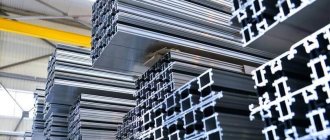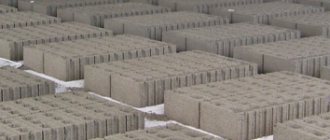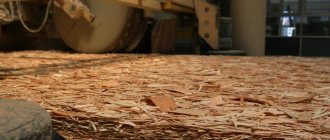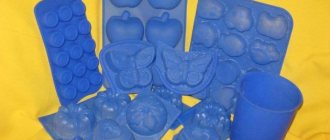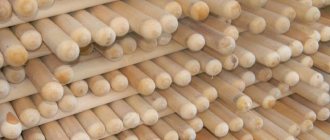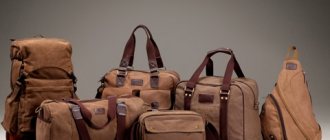Fabric Making Basics
Fabric is made from yarn, which in turn is made from fiber. The quality of the resulting fabric is highly dependent on the characteristics of the fibers.
Fibers are divided into natural and chemical, originating from natural raw materials or obtained as a result of chemical synthesis, for example, polymer fibers.
The entire technology is conventionally divided into three stages:
- Spinning;
- Weaving;
- Finishing.
Spinning
The basis of fabric production is spinning. It is a process that produces a long thread - a yarn woven from short fibers. This production process is carried out on a spinning machine.
The fibers produced by the mill are usually compressed into small bales. Then they are loosened and crushed using appropriate machines, while at the same time cleaning them from debris. The scutching machine produces canvas from threads, which is rolled into a roll.
The resulting canvas is then passed through carding surfaces covered with fine metal needles. At the exit, after carding, a sliver is obtained, which must be leveled on a draw frame, and then slightly twisted on a roving and twisting machine. After these operations, a roving is obtained.
On the spinning machine, the roving is leveled and drawn, then wound onto bobbins. A spinning machine for fabric production is serviced by spinners. Their responsibilities include eliminating yarn and roving breaks, changing bobbins and maintaining equipment.
Yarn is used to make:
- knitwear;
- sewing threads;
- non-woven and woven materials.
Fabric production technology and process
Let's look at what the technological process of fabric manufacturing looks like in practice, using cotton as an example:
- raw materials are collected manually - this method guarantees the purity of the raw materials and is considered gentle. The automatic principle of collection is not excluded, but in this case the quality of the raw materials will be worse and the cost will be lower;
- fibers are separated from foreign impurities, debris, dust and dirt - this is done either manually or using special equipment. The cleaning process is based on a chemical process. After such cleaning, the fibers will gain strength, and the fabric that is made from them will last a long time;
- Cotton is spun into threads - the purified fibers are passed through special machines. After twisting, the threads are impregnated with an adhesive composition - this makes them stronger and enhances adhesion to each other;
- the threads are bleached - natural raw materials have a grayish, sometimes yellow, tint. The threads are immersed in a special composition;
- the raw materials are cleared of glue - fragments of the adhesive mass that connected the threads are removed with powerful blowing;
- the canvas is dyed in the desired color - the fabric is treated with chemical components. The advantage of this dyeing method is its low price. The disadvantage is that to get a high-quality result, you need to have work experience. Only a qualified employee will correctly calculate the dosage of the composition and will not damage the fabric. The pattern is obtained by mixing chemical compounds.
Note! In the domestic market, plain fabrics are in greater demand, especially among wholesale buyers. Colored ones sell worse;
- the material is prepared for use - the surfaces are given a shine, impregnated with a special composition that will facilitate re-painting. As an option, the fabric is made heavier in a standard way - chemical treatment. If we are talking about wool, the fabric will be additionally treated to prevent felting. White fabrics are slightly bluish - this will make them look snow-white.
Synthetic yarn
For synthetic fabric production, a more complex technological scheme is used. A liquid and viscous spinning mass is obtained from the initial components. It goes into a spinning machine designed specifically for processing synthetic fibers.
The fibers are formed using special dies - this is a small metal cap with many small holes inside. Using pumps, the mass enters the die and flows out through small holes. The flowing streams are treated with special solutions for hardening.
The creation of synthetic fiber is also the spinning of this fiber. Depending on what the fabric is intended for and what quality is required, the number of threads twisted into one is calculated. After finishing, the threads are wound onto bobbins and sent for weaving.
Weaving
The direct process of producing fabric from yarn is called weaving. The production equipment at this stage is maintained by weavers, who can service up to fifty automatic looms.
On a mechanical machine, the weaver replaces empty bobbins and eliminates thread breaks. The employee must know the requirements for the quality of fabric, the parameters of defective fabric and the reasons for the appearance of defects, measures to prevent and eliminate defects. Once the weaver has started the loom, it begins to combine the yarn into the resulting woven fabric.
How to start a fabric manufacturing business
To get started, you need to draw up a short business plan, calculate approximate expenses and income from work.
You may be interested in: Use of sewing elastic bands and their features
Explore your future market
Business experts emphasize that textile production is quite a profitable business. People are interested in both cheap products and more expensive and high-quality ones.
Large production
Get financing
Start-up capital is needed in any business.
Receipt options:
- Take out a business loan;
- Find investors willing to invest in the project;
- Starting a business with a partner;
- State loan.
Find a production location
The main factor influencing the good development of a business is location. There must be a well-traveled place.
Purchase raw materials and equipment for fabric production
The most expensive thing you will have to spend on is equipment. Sewing machines and machines are very expensive, but for business you only need high-quality tools.
Hire working staff
To begin with, you can try to work independently, but if the business begins to gain success, then you need to hire responsible employees.
ATPR 120 machine
Organize advertising for your business
To get a good start, you need advertising. It can be in the form of leaflets, advertising in cinemas and buses.
Look for large product buyers
To promote your business faster, you need to look for wholesale buyers. This guarantees 95% success.
Threads and weaves
There are transverse and lobar threads, intertwined in different ways. The grain threads are directed along the fabrics, as they are thinner and stronger. Transverse threads are thicker, shorter, and tend to stretch.
The fabric produced on the loom is called gray. Threads woven from fibers of different colors are called melange. Fabric made from melange threads is called similarly. But if threads with different colors were used to produce woven fabric, the fabric is called multicolored.
The properties of the future fabric depend on the type of weave:
- Large patterned weave – jacquard;
- Complex weave - pile, pique, openwork, loop, double;
- Simple weave - twill, satin, plain, satin, crepe and diagonal.
Finely patterned weaves are made on a single-shuttle automatic loom. Multicolored and complex weaves are used on a multi-shuttle automatic loom, large-patterned ones are used on Jacquard looms.
How fabric is made
Types of denim fabrics
What is denim fabric made from today? Following modern technologies and preserving classical traditions, the main thing in fabric production is cotton thread. It is obtained from purified plant mass. The resulting threads are dyed. At first, natural indigo dye was used. Currently, artificial dyes are used in industry. The interweaving of dyed and undyed threads produces different colors on the back and front sides of denim. This is the most expensive and popular fabric.
Among the inexpensive fabrics that are one color on both sides is dyed cotton called gin. Summer sundresses and shirts are made from thin chambry denim. When elastin is added to cotton thread, stretch denim is obtained, which is mainly used for the manufacture of inexpensive women's jeans.
Fabric finishing
The last stage of production is finishing. It improves the quality and properties of the fabric, gives it a marketable appearance and strength, depending on what processes the finishing involves.
Finishing can be done:
- napping;
- whitening;
- mercerization;
- scorching;
- by boiling.
When singeing, protruding fibers are removed from the surface of the rough canvas. Desizing involves soaking the fabric to remove the sizing - the impregnation applied during weaving.
Boiling removes any impurities from the fabric, and mercerization adds shine, strength and hygroscopicity by washing. When bleaching, the fabric is discolored, and when brushed, it becomes softer.
Final finishing
Final finishing includes processes such as:
- calendering;
- expansion;
- finishing.
Calendering involves smoothing the canvas, widening - aligning it to a standard width, finishing - applying starch for density, whiteness for bleaching, or wax or oil for shine.
Equipment
Fabric production requires a fairly extensive production line. Let's consider the main types of production equipment, without which the production of woven products cannot be started.
Loom
Designed for the production of woven fabric, it can be shuttleless and shuttle, round and flat, wide and narrow. Weaving machines are selected depending on what kind of fabric needs to be produced: linen, silk, cotton or wool.
Jacquard machine
Special equipment for working with a weaving loom, which produces decorative and patterned fabrics, carpets and other carpet products.
sizing machine
Impregnates fabrics with an adhesive solution called sizing. This is necessary for the production of wear-resistant and special fabrics, for example, for workwear.
Zukker sizing machine
Rolling machine
It is used to roll the resulting web into a roll or reel using an automatically rotating roller. A properly maintained rolling machine is more efficient than hand-winding by weavers, especially on a production scale.
Dyeing line and printing machines
Allows you to dye fabrics with natural or synthetic dyes. The printing machine applies colored prints with paint or dissolves a stencil design onto the finished dyed fabric.
Large format textile printer for direct or transfer printing on fabric
Washing and inspection machines
The washing machine washes and dries woven fabrics after printing or dyeing, and control and measuring equipment is used to check the quality of the finished woven product, its length, width, density.
Racking, cleaning and shaking machines
Used in processing flax fiber to produce shorter fibers. Shaking machines loosen the short fiber and give it a marketable appearance.
Shaking machine T-150L
What are fabrics made from?
They are made from natural or synthetic fibers. Below is a description of what the fabric is made from.
What does fleece look like?
Production of padding polyester
Mainly used as filler. Synthetic padding is made from several layers of synthetic threads.
Linen crafts
Flax flowers are used in the production of linen fabrics. The material turns out smooth and shiny. This subtype also includes satin and viscose.
Jute production
To understand what this fabric is made from, you need to visit China. There is the same tree from which jute is made. Also very often made from bamboo. A subtype of burlap is made from it.
Manufacturing of woolen fabrics
The production of felted wool fabric begins with the collection of fur from sheep. It can be either pure or with additives of silk and other things.
How is non-woven fabric produced?
The production of non-woven fabric can be based on laminated and unglued, modified cellulose threads with possible mixing with polyester fibers. The production of PVC fabric is necessary for tents, sails and other things.
Materials production plant
How is fleece made?
What is fleece fabric for clothing made from? It is made from polyester. Using professional machines, small loops are created for backcombing and a large number of breathable pores.
You might be interested in what types of transparent and translucent fabrics there are
Felt production
This is a double-sided material made from fine wool. Felt is made by mixing fluff or synthetics.
How to make supplex
It is made with the addition of lycra, nylon, microfiber.
Attention! A distinctive feature is softness, the ability to beautifully fit the figure and not hinder the gait.
How to weave melange
Made from ordinary synthetic threads in various shades.
CB, manufacturing methods
Cotton is made from a plant called the cotton plant. Its fruit produces threads of varying lengths. The production of cotton fabrics is an industry of specialization in India and Belarus. This subspecies includes the material of flannel and calico (sweatshirts, T-shirts and underwear are made from it).
Jeans production
To create it, yarn with long fibers that are very similar to each other is used. They are intertwined to form denim threads.
Carding and spinning machines
The carding machine processes the flax fiber and makes strips from it, and the spinning machine produces yarn with the required strength. The spinning machine can be spindle or spindleless, the first, in turn, is divided into weft and warp.
This is just the main line of equipment, you may also need:
- flax cotoning lines;
- pulverizing machines;
- squeegees and dryers;
- wool washing and cotton processing devices.
It depends on the focus of the enterprise.
Equipment and materials
Each type of woven product requires its own devices and components. For example, cotton fabrics obviously need cotton, but the production of non-woven materials requires only waste from sewing factories. Viscose, flax or chemical fibers are perfect here. In the latter case, the entrepreneur is interested in the following set of equipment:
- chipping machine;
- plucking apparatus;
- carding apparatus;
- needle punching machine;
- machine for stitching canvas.
It is worth noting that the above equipment for the production of nonwoven materials is completely unsuitable for creating ordinary terry fabric. In this case you will have to purchase:
- Weaving machines.
- Rapier apparatus.
- Malimu.
- Sizing machine.
- Rejection apparatus.
- Coil winding machine.
- Warping machine with tape.
Both of the kits described above will again not be suitable for many other businesses. A factory that chooses to produce woolen fabrics will be required to purchase, for example, not only a weaving machine, but also a spinning machine. Also, in addition to the warping and winding machine, the kit must include a mixing chamber.
By the way, all components should be purchased as a whole line; this is often much cheaper than purchasing equipment separately. In addition, you will also have to purchase a dyeing machine and the corresponding dyes. It is also mandatory for manufacturers to have a washing machine.
